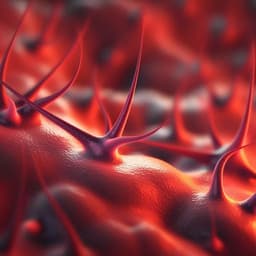
Medicine and Health
Ultra-conformal skin electrodes with synergistically enhanced conductivity for long-time and low-motion artifact epidermal electrophysiology
Y. Zhao, S. Zhang, et al.
Discover groundbreaking advancements in wearable healthcare with an ultra-thin dry epidermal electrode, developed by Yan Zhao, Song Zhang, and their team. This innovative technology ensures precise monitoring of electrophysiological signals while prioritizing comfort and minimizing motion artifacts, making it ideal for long-term health applications.
~3 min • Beginner • English
Related Publications
Explore these studies to deepen your understanding of the subject.







